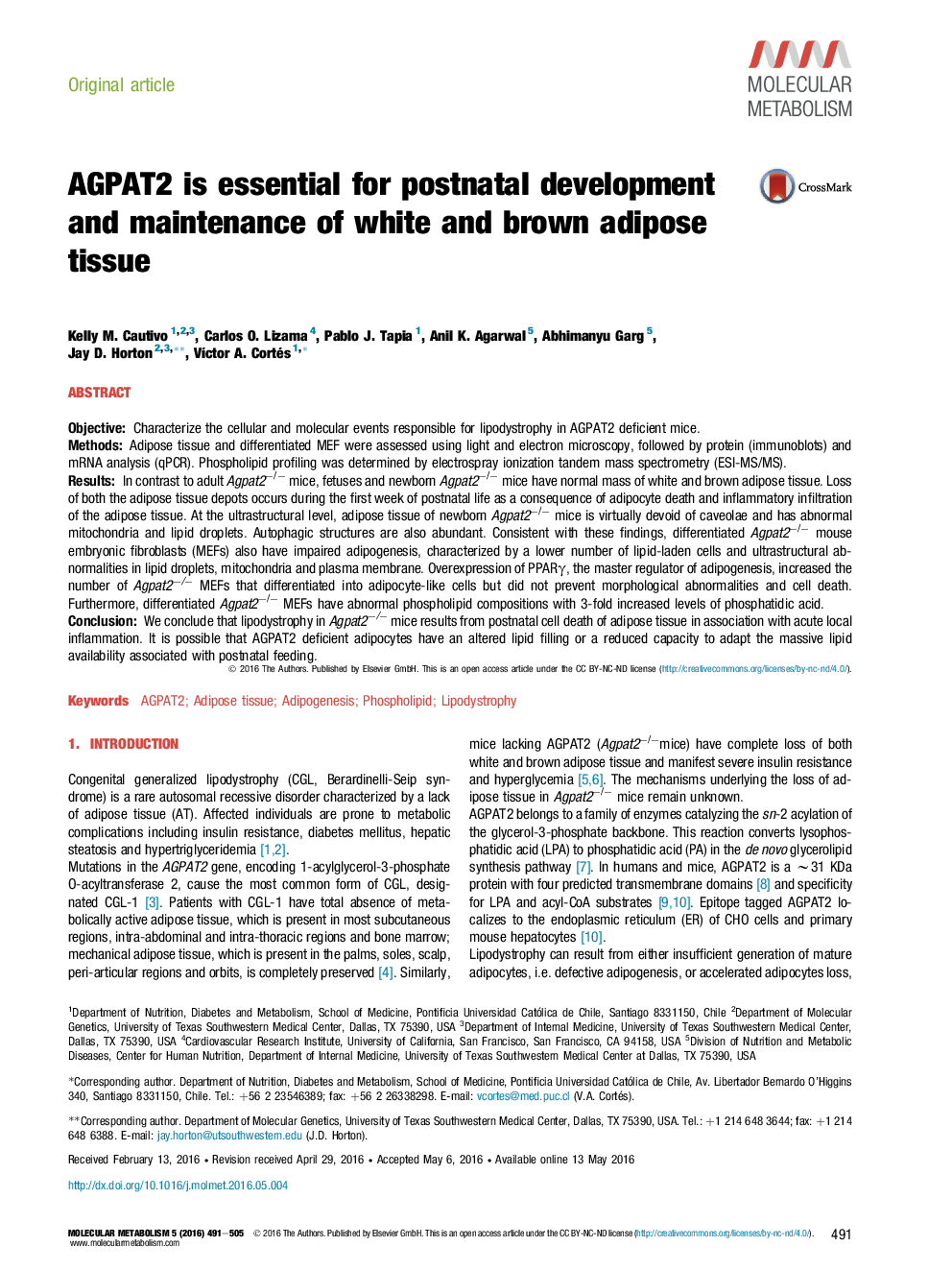| Article ID | Journal | Published Year | Pages | File Type |
|---|---|---|---|---|
| 3001259 | Molecular Metabolism | 2016 | 15 Pages |
•Post weaning Agpat2−/− mice are lipodystrophic.•However, they are born with normal mass of white and brown adipose tissue.•Adipose tissue in Agpat2−/− mice undergoes postnatal inflammatory cell death.•Differentiated Agpat2−/− MEFs recapitulate abnormalities of Agpat2−/− adipocytes.•Abnormal phospholipid composition might underlies lipodystrophy in Agpat2−/− mice.
ObjectiveCharacterize the cellular and molecular events responsible for lipodystrophy in AGPAT2 deficient mice.MethodsAdipose tissue and differentiated MEF were assessed using light and electron microscopy, followed by protein (immunoblots) and mRNA analysis (qPCR). Phospholipid profiling was determined by electrospray ionization tandem mass spectrometry (ESI-MS/MS).ResultsIn contrast to adult Agpat2−/− mice, fetuses and newborn Agpat2−/− mice have normal mass of white and brown adipose tissue. Loss of both the adipose tissue depots occurs during the first week of postnatal life as a consequence of adipocyte death and inflammatory infiltration of the adipose tissue. At the ultrastructural level, adipose tissue of newborn Agpat2−/− mice is virtually devoid of caveolae and has abnormal mitochondria and lipid droplets. Autophagic structures are also abundant. Consistent with these findings, differentiated Agpat2−/− mouse embryonic fibroblasts (MEFs) also have impaired adipogenesis, characterized by a lower number of lipid-laden cells and ultrastructural abnormalities in lipid droplets, mitochondria and plasma membrane. Overexpression of PPARγ, the master regulator of adipogenesis, increased the number of Agpat2−/− MEFs that differentiated into adipocyte-like cells but did not prevent morphological abnormalities and cell death. Furthermore, differentiated Agpat2−/− MEFs have abnormal phospholipid compositions with 3-fold increased levels of phosphatidic acid.ConclusionWe conclude that lipodystrophy in Agpat2−/− mice results from postnatal cell death of adipose tissue in association with acute local inflammation. It is possible that AGPAT2 deficient adipocytes have an altered lipid filling or a reduced capacity to adapt the massive lipid availability associated with postnatal feeding.
Graphical abstractFigure optionsDownload full-size imageDownload as PowerPoint slide
